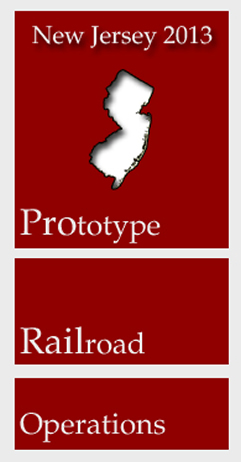NJ PRORAIL 2013
Harold Werthwein
Prototype: Erie Railroad -
Port Jervis (New York Division), Port Jervis to Susquehanna (Delaware Division), Susquehanna to Binghamton (Susquehanna Division), Lackawaxen to Avoca (Wyoming Division), Avoca to Susquehanna (Jefferson Division).
Layout: Erie Railroad: Delaware, Wyoming and Jefferson Divisons
Scale: HO
Era: 1953
Layout Size: 30' x 85'
Control system: Rail-Lynx
Dispatching method: Time Table
Communications: FRS Radio
Crew size: 20
Operating positions:
- Dispatcher
- Trainmaster (Crew Caller)
- Binghamton Yard Master
- Susquehanna Yard Master
- Port Jervis East Yard Master
- Port Jervis West Yard Master
- Avoca Yard Master-
- Road Crews 10
Handicap accessibility: No
Mainline:
Delaware Division: Double Track Approximately 600' long.
Wyoming Division: Single Track with 3 passing sidings Approximately 175' long.
Jefferson Division: Single Track with 1 passing sidings Approximately 60' long
Description:
From the division point at Port Jervis to the moderate sized city of Binghamton, N.Y. the Erie Railroad was double tracked and traveled the beautiful valleys of the Delaware and Susquehanna Rivers. It was predominately an area of agriculture and dairy production. This is quite characteristic of the entire Erie Railroad system from Chicago to New York. With few large cities enroute that normally created delays it enabled the Erie to expeditionally move perishables between these two major cities. The Erie originated 6 perishable and/or merchandise thru freights in Chicago plus one in Buffalo. Numerous sections were common. NY90 occasionally ran with 6 or 7 sections. The above trains and their westbound counterparts are represented on the layout. Also, the three eastbound and their westbound passenger trains also operate on the layout. Additional passenger service is provided by two eastbound milk trains originating in Binghamton and Hornell. Their westbound counterparts delivering empty milk cars originate in Jersey City. These trains have limited passenger service in addition to 4 to 10 milk cars.
The Wyoming Division originates at Plains Junction, PA with a Central Railroad of New Jersey interchange and ends at Lackawaxen, PA on the Delaware Division. The primary purpose of the Division is to move anthracite coal from Scranton, PA area to New England and the Metropolitan area of New York or New Jersey. This is accomplished on the layout with 10 coal trains in a prototype day. Like the prototype the model is single track with passing sidings. A coal marshaling yard is located in Avoca, a small town in the vicinity of Scranton, PA.
Like the prototype the anthracite mines are serviced by several Division branches. The following collieries are modeled and serviced: Old Forge Colliery, Central Colliery, Langcliff Colliery, Underwood Colliery and No. 1 Colliery. In addition there is an interchange with the D&H Railroad on the Jessup Branch.
The Honesdale Branch originates in Hawley, PA on the Wyoming Division and primarily services a mid-sized town with on major manufacturer. Several commuter passenger trains originate and terminate in Honesdale.
The layout operates on a three trick basis of eight hours per trick. Approximately 85 trains are run on a prototype day.
The Delaware Division was the feature article by Tony Koester in the January 1994, 60th anniversary issue of Model Railroader. The Wyoming Division was also a feature article of the December 2007 Railroad Model Railroad Craftsman. Volumes 18 & 61 of Allen Keller’s Great Model Railroads feature the entire layout
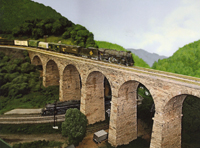 |
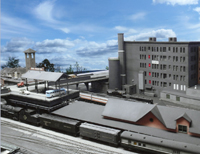 |
|---|---|
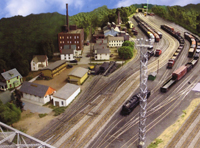 |
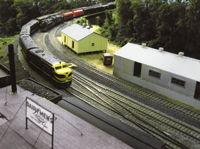 |
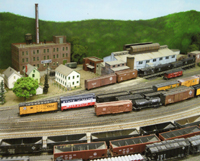 |
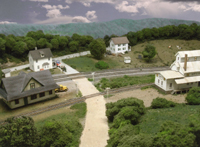 |
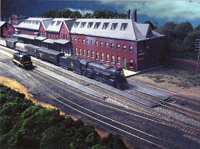 |
 |
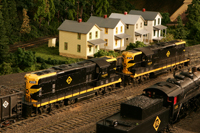 |
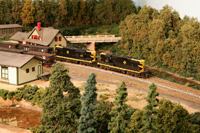 |
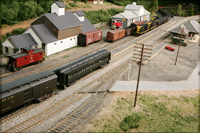 |
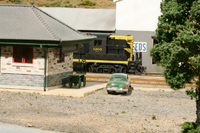 |
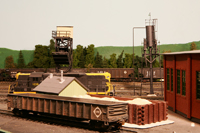 |
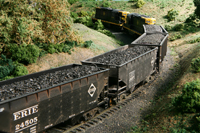 |
Last Updated: February 5, 2013 8:35 AM
